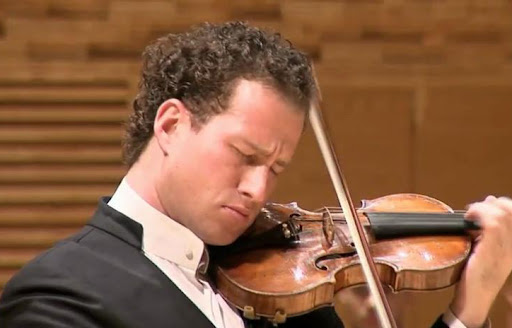by Stephanie Manning

The young Finnish conductor seemed to relish his third appearance on the Severance podium, and both he and soloist Nikolaj Szeps-Znaider approached Sibelius’ Violin Concerto with passion. Though the compositional process of Sibelius’s only concerto was hampered by uncertainty, there was nothing uncertain about Szeps-Znaider’s interpretation. His full, warm sound blended effortlessly with the Orchestra, whose lush, Romantic playing never obscured the soloist.
Throughout the mournful melodies of the second movement, Szeps-Znaider was unafraid to get as soft as possible, thanks to the Orchestra’s following his every move. An intricate balancing act from the winds — particularly the bassoon and horn sections — amplified the movement’s wistful nature.
On the podium, Mäkelä was the picture of poise, his movements crisp but not too rigid. The beginning of the third movement might have benefited from more flexibility in the tempo, as Szeps-Znaider — absorbed in delivering rhythmic accuracy — began to break away from the larger group. But once the movement settled in, the focus returned to the violinist’s technical mastery and pristine harmonics during this thrilling finale.
The dark, rich sound of the string section, anchored by the Orchestra’s eight basses, seamlessly carried over into Shostakovich’s Symphony No. 10. Where the Sibelius is awash in nostalgia, this landmark piece by the Russian composer is rife with emotional turmoil — and full of symbolism, including the use of his initials DSCH. The slow build of the first movement featured principal clarinet Afendi Yusuf, whose solo lines were as smooth as glass — a feat later echoed by principal flute Joshua Smith.
The grand entrance of the five-person horn section, led by Nathaniel Silberschlag, signaled a growing intensity, and soon the whole orchestra built to a crashing tidal wave of sound that repeatedly reached a climax before the delicate piccolo duo ending.

Crisp, assertive bell tones from Silberschlag — in a musical phrase that spells out the name ELMIRA, one of Shostakovich’s students — and an assured English horn solo from Robert Walters defined the third movement, a calm amid the storm. The musicians gave their all during the fiery finale, where Shostakovich’s initials appear one more time just before the piece ends in a flourish.
Published on ClevelandClassical.com April 27, 2022.
Click here for a printable copy of this article



